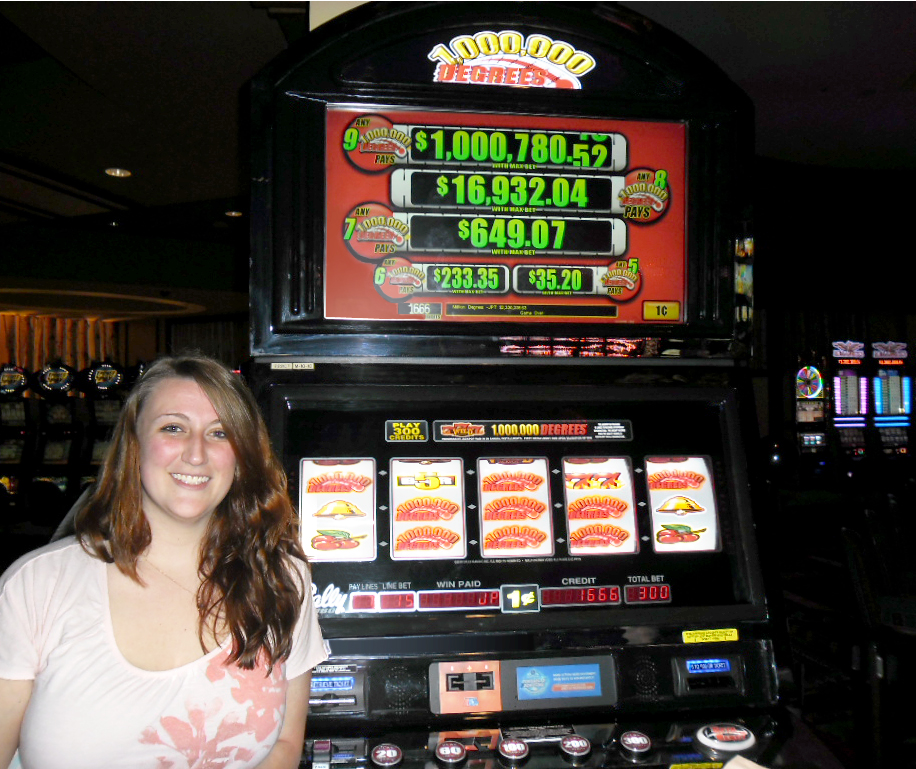Francoise Slot
How To Find Your Motherboard's Brand, Model, and Serial Number Identify the Motherboard with the Command Prompt In Windows 7, click Start and type cmd in the search bar to open the Command Prompt. Francoise Slot is on Facebook. Join Facebook to connect with Francoise Slot and others you may know. Facebook gives people the power to share and makes the world more open and connected.
| Sorgenfri Palace | |
|---|---|
Sorgenfri Palace | |
| General information | |
| Type | Palace |
| Architectural style | Baroque |
| Town or city | Kongens Lyngby |
| Country | Denmark |
| Construction started | 1756 |
| Completed | 1757 |
| Client | Dowager Princess Sophie Caroline of East Frisia |
| Design and construction | |
| Architect | Lauritz de Thurah |

Sorgenfri Palace (Danish: Sorgenfri Slot; lit. 'Sorrow free', a direct calque of Sans Souci) is a royal residence of the Danishmonarch, located in Lyngby-Taarbæk Municipality, on the east side of Lyngby Kongevej, in the northern suburbs of Copenhagen. The surrounding neighbourhood is called Sorgenfri after it. Only the cellar and foundations survive of the first Sorgenfri House, which was built in 1705 to design by François Dieussart. The current house was built in 1756 by Lauritz de Thurah and later adapted and extended by Peter Meyn in the 1790s. Lauritz de Thurah has also designed buildings which flank the driveway closer to the road.
Francois Eslot is on Facebook. Join Facebook to connect with Francois Eslot and others you may know. Facebook gives people the power to share and makes the world more open and connected. Frederic vs Francois: In It For the Monet is a 5 reel, 15 line slot game with beautiful, creative graphics and plenty of opportunities to win! With multiple bonus rounds that offer multipliers and free spins as well as generous scatter symbols and unpredictable wild symbols, Frederic vs. Francois is a slot you don't want to miss out on! This item Scalextric C3759A Legends Limited Edition Tyrrell 002 Francois Cevert Slot Car (1:32 Scale) Scalextric Lotus 25 Monaco Grand Prix 1963 Jack Brabham 1:32 Slot Car C4083 Scalextric 412P Brands Hatch 1967#9 1:32 Slot Race Car C3946.
Sorgenfri Palace is surrounded by a large park which is bounded by Mølleåen to the east. It was adapted to the English Romantic style in the late 1790s and early 1899s and contains several small buildings.
Christian X used it as a summer residence and it has later been part of it let out to relatives of the royal family. The park is open to the public.
History[edit]
Sorgenfri Palace is located at the site of a medieval settlement, Mølletorp, which was owned by the Bishopric of Roskilde but confiscated by the crown during the Reformation in the 1530s. In 1686, it was replaced by a country house by High Court Justice Michael Vibe.[1]
Count Carl von Ahlefeldt acquired the estate in 1702. He commissioned the architect François Dieussart to build a new summer residence at the site and renamed it Sorgenfri. The building, a half-timbered, three-winged complex in Baroque style, was completed in 1705. The central wing contained a banquet hall with double high ceilings. Passage between the two residential side wings was therefore only possible at the ground floor.[2]

King Christian VI acquired the estate in 1730. His son, Crown Prince Frederick, the later King Frederick V, used it as summer residence from 1742. The building was refurbished by Lauritz de Thurah who also constructed new stables and a new wing for the gentlemen of the Court.
After his ascend to the throne in 1747, Frederick V gave the property to his aunt, Sophie Caroline, Dowager Princess of East Frisia. She demolished it and charged Lauritzde Thurah with the construction of a new house on the foundations of the old one.[3][4]
Sophie Caroline died in 1764. In 1766, Sorgenfri was ceded to the 12-year-old Prince Frederick, the half-brother of Christian VII of Denmark. In 1769, he sold the property to Jean Henri Desmercières. The next owner was the merchant and shipowner Henrik Bolten, whose trading house was based in the Boltens Gård in Copenhagen. He went bankrupt in the late 1780s and Sorgenfri was then reacquired by Prince Frederick in 1789. He charged Peter Meyn with adapting and expanding the house.
When Crown Prince Frederik died in 1805, Sorgenfri was passed on to his son, the later King Christian VIII, who used it as a summer residence. After his death in 1848, Dowager Queen Caroline Amalie spent all her summers at the estate until her death in 1881.[5]
Frederik VII had ceded Sorgenfri to the state in 1856 and after 1881 it was left empty for years. In 1898, it was ceded to Prince Christian, later King Christian X as summer residence. King Christian X and Queen Alexandrine continued to live at Sorgenfri in the summer time and the king was often seen riding in the neighborhood.
Prince Knud married Princess Caroline-Mathilde in 1933. During the Second World War, the royal family, was staying at the Palace. On 29 August 1943, the Germans launched Operation Safari, where under the command of Lieutenant General Eduard Ritter von Schleich, they attacked the palace, resulting in a firefight and the death of seven Germans.[6]Prince Knud and Princess Caroline-Mathilde continued to live in Kavalerfløjen until Christian X's death in 1947 and then moved into the main building. The main building was once again left empty with Princess Caroline-Mathilde's death in 1995.
From 1991, Count Christian of Rosenborg, a first cousin of Margrethe II, and Countess Anne Dorte lived in a detached wing of the palace called Damebygningen until they died in 2013 and 2014, respectively.[7]
Architecture[edit]
Sorgenfri Palace is designed in the Neoclassical style. The roof is topped by a cupola dating from the renovation in 1791–94.
Palace garden[edit]
The palace is located in a 40 hectares (99 acres) garden, which was originally made in Baroque style in 1706. Prince Frederick had this changed to an English landscape garden style between 1791 and 1794. The line of lime trees in front of the palace is still a trace of the baroque style garden.
Architect Nicolai Abildgaard was responsible for the garden pavilions The Swiss House and The Norwegian House.
The Mølleåen river runs through the park on the east side.
A memorial bench for poet Viggo Stuckenberg and a memorial stone for women's rights activist Gyrithe Lemche are also located in the park.
Park[edit]
The park covers a large area on both sides of Lyngby Kongevej. It contains several listed buildings.
Woodland and a garden surround the castle. A French-style garden with symmetry, topiary shrubs and ornamental vases was created in the 18th century. Crown Prince Frederik adapted it in the English style with winding paths and romantic garden furniture such as a well, a grotto and gazebos. The latter, the Norwegian House and the Swiss House, were designed by Nicolai Abildgaard.
References[edit]
- ^'Sorgenfri Slot' (in Danish). Lyngby-Taarbæk Kommune. Retrieved 17 February 2017.
- ^'Sorgenfri Castle'. lyngbyok.dk. Retrieved 21 February.Check date values in:
accessdate=(help) - ^'Sorgenfri Palace'. Danish monarchy. Retrieved 2009-01-20.
- ^Paulsson, Thomas (1958). Scandinavian Architecture: Buildings and Society in Denmark, Finland, Norway, and Sweden from the Iron Age Until Today. University of Michigan. p. 152.
- ^fra Sorgenfri Slottaarbaek.lokalavisen.dk/historier-fra-sorgenfri-slot-/20150527/artikler/705279589 'Historier fra Sorgenfri Slot' Check
url=value (help). lyngbyok.dk. Retrieved 21 February.Check date values in:accessdate=(help) - ^Otzen, Theis (21 April 2015). 'The Germans Attacked Sorgenfri Palace'. Gentofte Lokalavisen (in Danish). Retrieved 23 December 2017.
- ^'Sorgenfri Palace and Palace gardens'. Palaces and Properties Agency (Denmark). Archived from the original on 2011-05-26. Retrieved 2009-01-20.
External links[edit]
| Wikimedia Commons has media related to Sorgenfri Slot. |
Coordinates: 55°46′44″N12°29′49″E / 55.77889°N 12.49694°E

I played this great little slot from Gamesys in its mobile phone version and loved its quirky sense of humour, zee little French touches, and the art theme.
On the Reels...
Played out over five reels and 15 paylines, the game features two bungling art thieves - the titular Fred and Frank - plus some 60s-style graphics straight out of The Pink Panther. Elsewhere on the reels there is a picture of Edvard Munch's classic artwork, The Scream, plus some stylish 10-to-Ace icons.
Wild About Monet
In fact, if you've played BetSoft's amazing Parisian-set crime caper, After Night Falls, then you'll certainly get a kick out of this. The Wild is the Monet symbol. It substitutes for all symbols other than the Bonus symbols, of which there are a couple.
Win 15 Free Spins with the Easel
Keep an eye out for the easel icon. It only appears on Reels 1, 2 and 3, but when it appears on those three reels together you’ll trigger the Painting Bonus.
Francoise Clottes Gef
Here you’ll have to slip on the beret and slap on the oil paint as you pick easels from a selection of 15. From here you’ll determine your free spins and multiplier. Hit three more Scatters and you’ll bag a further 15 freebies.
That's it when it comes to bonus features in this game, but you're not really playing F vs F for its multi-layered bonus rounds.
15 free spins may not seem a lot, but re-trigger it and you can be in line for some great wins. That's if you can trigger the round in the first place, of course; hitting three Scatters L-R can prove to be frustratingly elusive.
Our View...
As we mentioned at the top of the review, if you like the quirky French thrills of this game you'll love Betsoft Gaming's 3D slot, After Night Falls.
Francoise Slotala
And while we're on the Betsoft tip, check out another of the leading developer's titles - A Night in Paris - which is a great 5-reel, 30-payline slot with slick intro sequences, perfectly rendered symbols and lovely 3D animation.